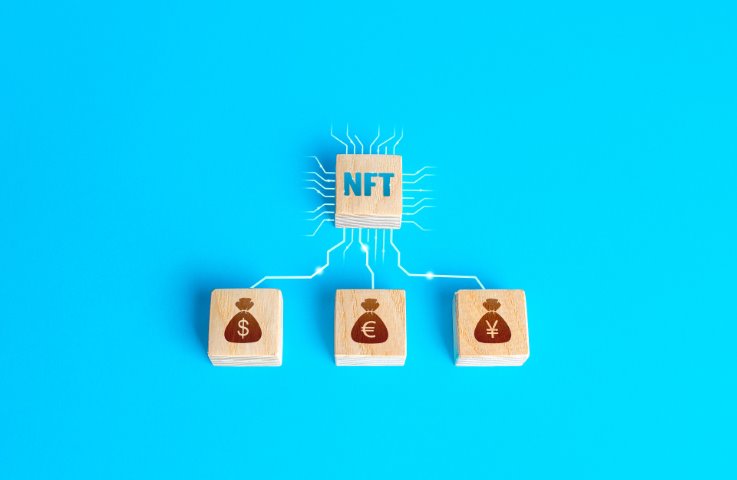
One major change in the past 18 months has been the emergence of NFTs. Although they have existed for a while, they really came onto the radar this year.
“Now everyone’s talking about it,” David Lee, an associate at law firm Fladgate, told eprivateclient.
But, will NFTs have an impact on the private wealth industry?
What are NFTs?
NFTs are ‘non-fungible tokens’. Essentially it just means each one is one of a kind.
An NFT is simply a digital serial number – a string of letters and numbers.
It records the existence of an original asset, whether it is an artwork, piece of music, or something else entirely.
The digital code proves the asset is a unique asset. The code also proves that you own the original asset and not a copy.
This digital code is stored in the blockchain, which is immutable – you cannot alter the blockchain.
Hetty Gleave, a partner at Fladgate, likened blockchain to the Land Registry. It is a record of all sales, transactions and current ownership.
Given it stores an asset’s complete ownership history, “it offers a lot more provenance than just downloading a picture”.
NFTs and digital art
NFTs have taken off in a range of industries, but perhaps most in digital art. This has not always been the case, however.
Ms Gleave explained that two years ago the art world was looking down its nose at NFTs. Comments like “it’s the emperor’s new clothes” or “it’s a bubble that will burst” were commonplace.
This has since changed rapidly. Well-respected auction houses like Bonham and Christie’s are holding NFT sales. Even Damien Hurst – reportedly the UK’s richest living artist – is selling NFTs for his work.
Ms Gleave believes part of the reason NFTs are proving so popular in the art world is because provenance is so important. Proving ownership and authenticity is a continual challenge for artists and art lovers alike.
It’s also a completely new media for the industry. This is an “incredibly rare” occurrence in the art world, she explained.
Many artists are also in favour of NFTs. This is because they receive a percentage of their artwork's resale price. This means that if a piece of art suddenly becomes very valuable 10 years after it was originally sold, the original artist would still benefit.
“It works for everyone and it’s fairer for the artists,” Ms Gleave argued.
There are still some people that struggle with the concept because it is not tangible. Buyers receive no physical asset.
However, Mr Lee believes this is much less of an issue for younger generations who are used to “renting” everything. Services like Netflix and Spotify have helped accustom people to not physically owning things they take pleasure in.
The benefits of NFTs
One of the top benefits of NFTs is that they are so hard to replicate and fake. Forgery is a big issue in the art world.
Another benefit is accessibility. If you own a large, traditional, oil painting, you can only look at it when you are in the room it is stored in. With a digital asset, you can access it at any time from any place.
You may even be able to store the asset on multiple devices. But, this will depend on the exact rights you are sold. Currently, these rights can vary hugely, but Mr Lee believes this will become much more uniform very soon.
Some also believe NFTs are “democratising art”, Ms Gleave said. Far more people have the chance to buy and enjoy digital assets than traditional ones.
It also lowers the barriers to entry for those creating art. Almost anyone can create and sell digital art. It’s much easier for younger artists to make a start in the industry.
The downsides
While it’s near impossible to alter the blockchain, it is possible for fraudsters to create spoof entries that look very similar.
Mr Lee argued that “as long as there’s been an original, there’s been a knock off.” By making it far harder to replicate originals, NFTs could end helping stop this practice.
Another issue is that blockchain has a limited size. It can only contain a link to the asset rather than actual asset.
Much like a piece of physical art can get damaged, so too can links. What happens if the wrong link is inserted into the blockchain or if the link is broken either deliberately or by accident? These questions will need to be carefully considered, if and when NFTs become more commonplace.
NFT buyers and sellers may also worry about not knowing who they are dealing with. While there might be some useful indicators that an individual is who they say they are, there can still be doubts.
“It’s not a Wild West, but it’s not far off it,” Mr Lee warned. There’s no real regulation in private dealings, “so you have to keep your eyes open”.
Going through an official auction house like Bonhams or using a lawyer can help offer more certainty if this is a concern.
NFT transactions are also very environmentally unfriendly. It takes a large amount of energy to mine NFTs and every blockchain update requires significant energy to complete. With an ever increasing focus on sustainability, it is likely there will be more focus on this in the near future.




